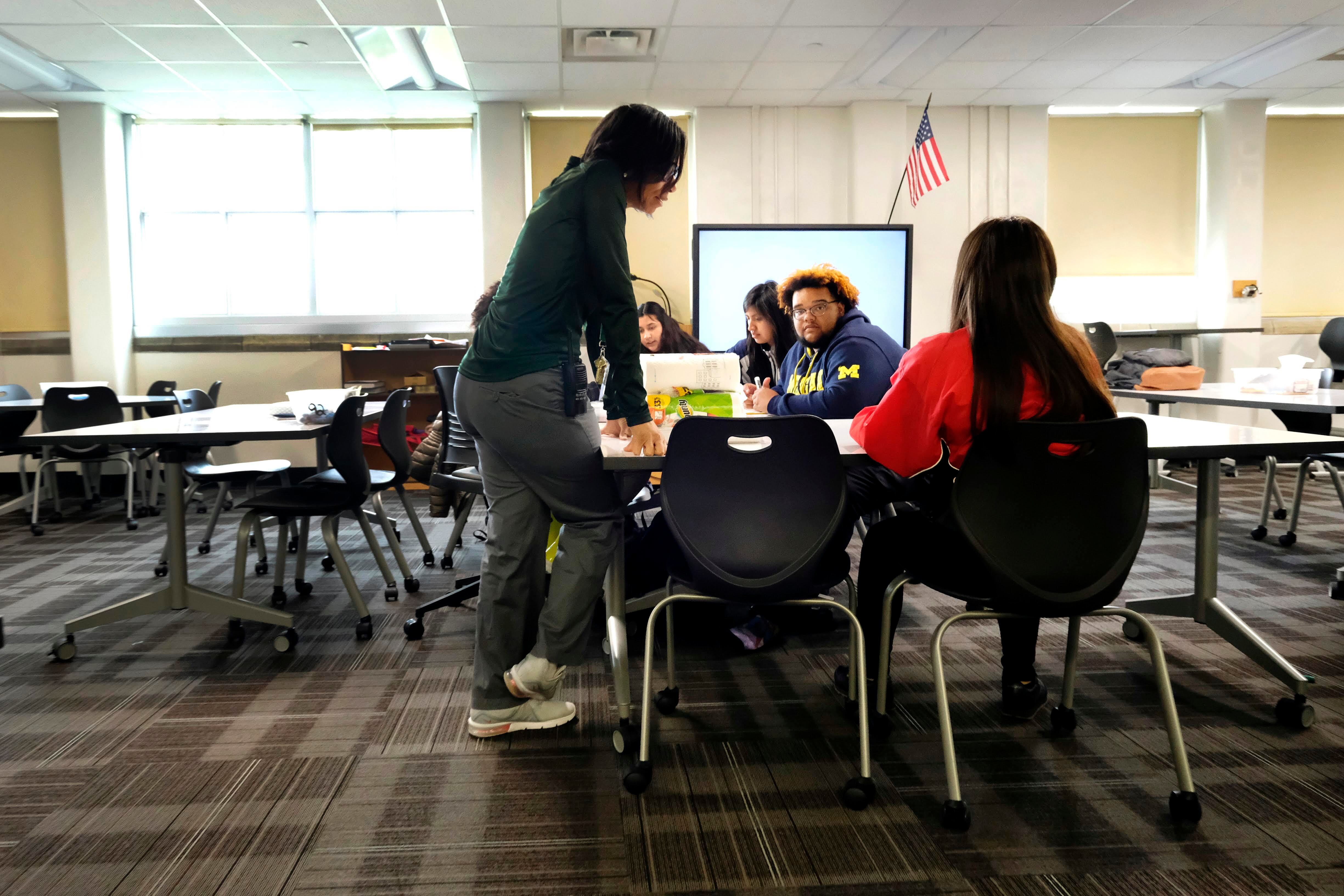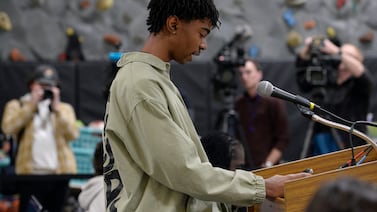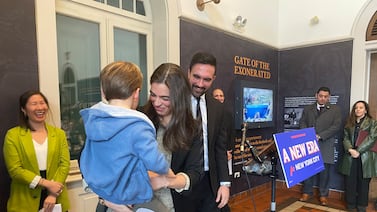Mackee Mason says families choose his Austin, Texas charter high school because it’s safe, with little bullying or fighting. Mason, the school’s principal and football coach, credits its ethnic studies courses.
The two classes, which students take in ninth and then 11th grade, feature discussion and instruction in LGBTQ history, colonialism, Reconstruction, Jim Crow, police brutality, and exclusionary immigration policies. That allows students, who are predominantly Black and Hispanic, to reflect on their own experiences and learn about others’.
“I know without a shadow of a doubt that that is the number one reason why we have such a special place,” Mason said. “We have these honest conversations that at times can be uncomfortable but we push through that to make a better space.”
Research backs up Mason’s positive experience. A handful of recent studies have found that students are more engaged in school after taking classes that frankly discuss racism and bigotry — just as some educators like Mason fear such discussions could be threatened by a wave of broad state laws designed to limit the teaching of what some are calling “critical race theory.”
“These experiences where [students] grapple head-on with issues of identity and race and racism … does something to their level of engagement,” said Emily Penner, a professor at University of California, Irvine who has studied courses that include discussions of racism. “That process is really useful to them in an academic sense, probably in a personal sense as well.”
A handful of recent studies offer evidence of those benefits.
- An ethnic studies course developed by the San Francisco school district increased participating ninth grade students’ attendance, course completion rates, and grades, according to a 2017 study coauthored by Penner. The class focused on social justice movements and discrimination throughout U.S. history. It also pushed students “to explore their individual identity, their family history, and their community history” and required completing a service project. Researchers compared nearly 1,500 participating students at three high schools to similar students who didn’t have the chance to participate in the class. Ninth grade GPAs increased by 1.4 points among students who took the course.
- An Oakland class for Black boys decreased their chances of dropping out. The class focused on Black history and culture, and included discussions about topics like how to challenge negative stereotypes about Black males. It also features college and career advising. A study of six Oakland high schools found that the program reduced dropout rates among Black boys from 8.5% to 4.9%.
- Tucson’s Mexican American studies course appeared to boost test scores and high school graduation rates, according to a 2014 paper. The class focused on social justice and patterns of oppression in society. (This became a political controversy and Arizona’s legislature eventually banned the class, but the law was later struck down by a federal judge as unconstitutional because it was motivated by racism.) Students who took the class were several percentage points more likely to pass state exams and to graduate high school, compared to similar students who didn’t take the course, according to the study.
- A history lesson focusing on Black and Hispanic contributions to history improved political engagement. In this narrower study, a researcher provided history lessons about either the abolition of slavery or Cesar Chavez and the United Farm Workers to several hundred students in a few Chicago-area high schools. One group received a lesson based on a commonly used history textbook. Another group’s lesson on the same topic put a greater emphasis on the role of women and people of color in creating broad social movements. The study found that after the assignment, Black and Latino students in the second group were more likely to say they intended to do things like vote when they became eligible or join a protest.
The research on this topic has some limitations. Each of these studies focuses on a relatively small program, and it’s generally seen as easier to get good results from pilot programs than with large-scale initiatives.
Still, these findings are increasingly relevant because there appears to have been a meaningful uptick in efforts to acknowledge race and racism in schools. One recent study found that in the four months after George Floyd’s murder, there was a large increase on the crowdfunding website Donors Choose in donations to teachers for books featuring Black authors or protagonists — $3.4 million worth overall.
But some shifts have prompted a backlash under the banner of “critical race theory,” a term being used to refer to everything from teaching elementary school students about desegregation to separating students into “affinity groups” by race. Critics say that such efforts overstate the role of racism in American society and stoke division between people of different races.
In response, a number of states have recently passed laws attempting to ban “critical race theory.” The laws vary in scope. Texas’ law, for instance, bars schools from promoting the idea that racism is “anything other than deviations from, betrayals of, or failures to live up to, the authentic founding principles of the United States” or that an individual “should feel discomfort, guilt, anguish” based on their race or gender.
“At a time when racial tensions are at a boiling point, we don’t need to burden our kids with guilt for racial crimes they had nothing to do with,” said Texas Rep. Steve Toth, the bill’s author.
Notably, the legislation does say that Texas students should learn about the “accomplishments of marginalized populations” and the “history of white supremacy.” It also says that conversations between students should not be limited as a result of the law.
It’s not yet clear what such laws will mean for educators like Mason, since so much depends on how the legislation is interpreted and enforced. He has no plans to scrap his school’s equity initiatives, and he doesn’t think they violate the new law, though its broad language concerns him.
“We’re not saying ‘white people, you are to blame,’” said Mason. “That’s what I’m worried about: If we’re talking about factual things and somebody feels hurt by that, they can try to twist it.”
A number of other commentators, including some conservatives, have raised similar concerns about the potential chilling effect of these laws. Some legal scholars say that the laws could face legal challenges as unconstitutionally vague.
Penner fears that it’s become even more challenging for educators to take these issues on.
“The current climate is going to make it hard for teachers to have the time and space needed to develop that skill set,” she said. “And that means students might miss out on the chance to have important conversations.”





